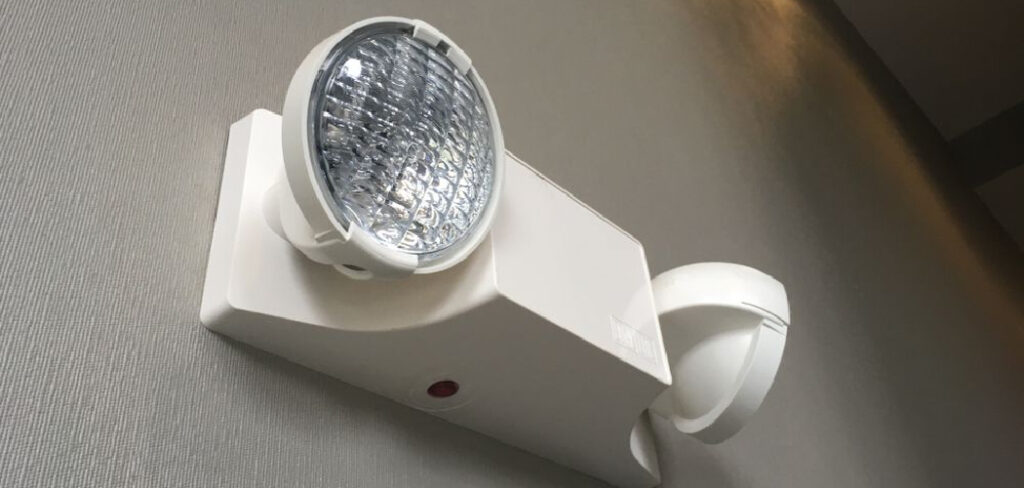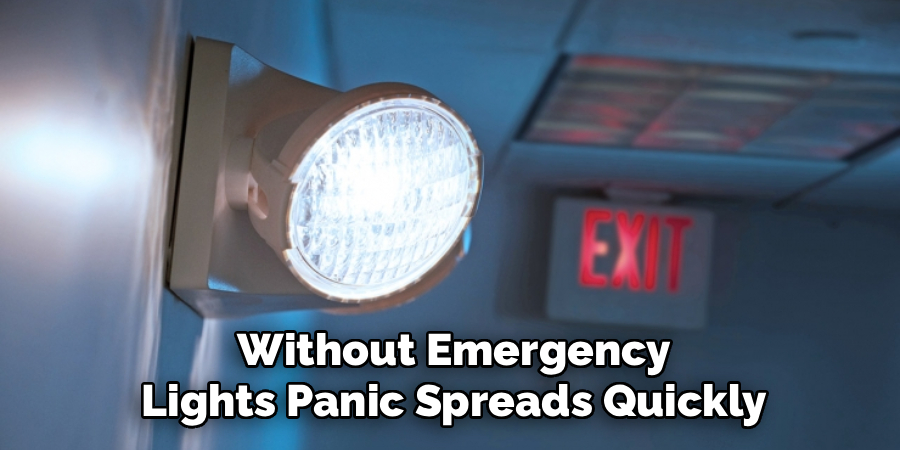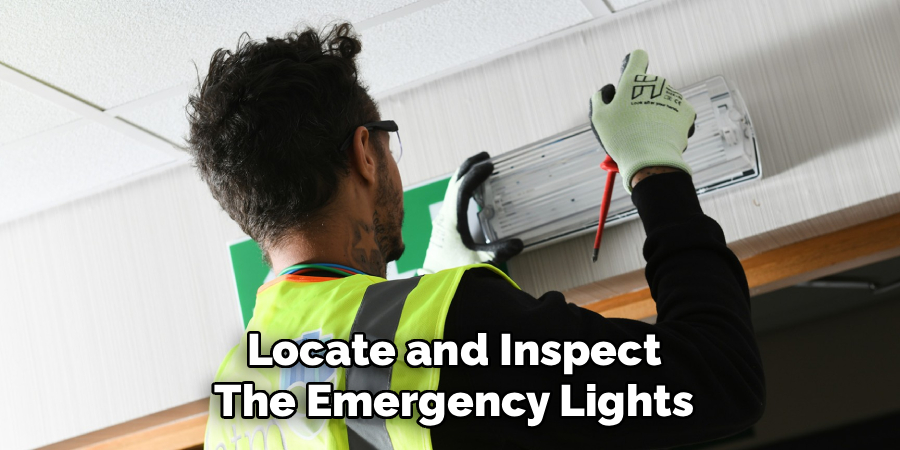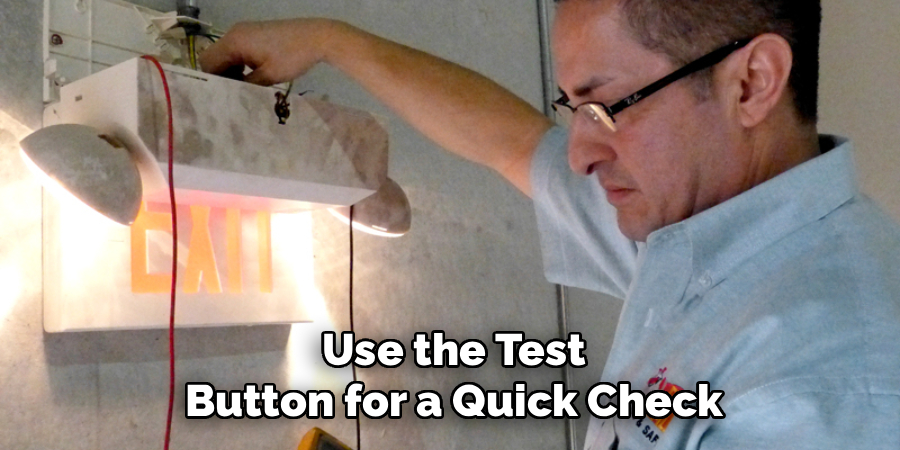When the power goes out unexpectedly, whether because of a storm, a fire, or a grid failure, emergency lights are what guide people safely to the exit. In the United States, they’re not just helpful accessories; they’re legally required in most commercial spaces such as schools, offices, hospitals, and shopping centers.

Testing them regularly is more than a safety routine—it’s a legal obligation. Organizations like OSHA (Occupational Safety and Health Administration) and NFPA (National Fire Protection Association) have clear regulations about emergency lighting. OSHA emphasizes safety in the workplace, while NFPA 101 Life Safety Code requires both monthly functional tests and annual 90-minute duration tests.
If that sounds overwhelming, don’t worry. This article breaks it all down into simple, easy-to-follow steps. You’ll not only learn how to test emergency lights correctly but also get practical tips from real experiences, so your system is always ready when it matters most.
Understanding Emergency Lights
Emergency lights are fixtures designed to switch on automatically when power is lost. Their purpose is simple yet critical: to provide illumination during an evacuation so that people can safely and calmly exit a building.
In the USA, you’ll typically find three kinds of emergency lights:
- Standalone emergency light units with built-in batteries.
- Combination units that pair exit signs with attached lamps.
- Centralized battery-backed systems that power multiple fixtures from one source.
Most models rely on sealed lead-acid or nickel-cadmium batteries, which last about three to five years. Bulbs or LEDs, depending on the model, can last much longer but still need occasional replacement. Since building codes require proper emergency lighting in exits, stairwells, and hallways, inspectors pay close attention to these fixtures.
Why Testing Emergency Lights is Important
Imagine being in a crowded movie theater or office building when the lights suddenly go dark. Without emergency lights, panic spreads quickly. Properly tested emergency lighting prevents chaos by ensuring safe exits are visible.

Regular testing matters for several reasons:
- Safety: Reliable emergency lights guide people to safety during fires, power outages, or natural disasters.
- Compliance: Fire marshals check them during inspections, and failure can result in fines.
- Reliability: Testing identifies problems before an actual emergency exposes them.
- Insurance: Many insurance companies require proof of working emergency systems.
- Peace of mind: Knowing your emergency system is functional means one less worry on your shoulders.
Safety Precautions Before Testing
Before you begin, it’s important to take a few precautions. Inform building occupants if you’re about to test, so no one panics when lights suddenly flicker or turn off. If you’re working with electrical panels, wear protective gloves and safety glasses. Some tests are simple and safe for anyone to perform, but if you feel uncomfortable or encounter electrical issues, always hire a licensed electrician. Having the right tools nearby will also save time.
Necessary Tools and Materials
Having the right tools can make the testing process much smoother. Here’s a list of essential items you’ll need for safely checking your emergency lights:
- Ladder
- Flashlight (to guide you while power is off)
- Voltmeter or multimeter
- Logbook or checklist (for recording results)
- Replacement batteries and bulbs (to fix issues immediately)
5 Easy Steps on How to Test Emergency Lights

Step 1: Locate and Inspect the Emergency Lights
The first step is identifying all emergency lights in your building. It may seem simple, but in larger spaces it’s easy to miss a unit or two. These fixtures are usually placed in stairwells, hallways, and near exit doors. Walk through the building with a checklist to make sure none are overlooked.
During this walkthrough, do a quick visual inspection. Look for cracked housings, loose wires, or dirt-covered lenses that might block brightness. Even if the light works, physical damage or grime can reduce effectiveness in an actual emergency. Addressing these small issues early ensures smoother testing later.
Step 2: Use the Test Button for a Quick Check
Most modern emergency lights have a small “test” button. Pressing and holding it simulates a power outage by disconnecting the main power and switching the fixture to battery mode. Both lamps should turn on and shine brightly.
Hold the button for at least 30 seconds to check performance. Watch closely for flickering, dimming, or only one lamp working—common signs that something is wrong. This quick functional test confirms the system can handle a short outage and helps identify fixtures that may require repairs or maintenance.
Step 3: Run the 90-Minute Duration Test
A functional test is useful, but it doesn’t prove whether the lights can last through a full emergency. That’s why the NFPA Life Safety Code requires a 90-minute test.
To perform this, cut power at the breaker or use the test button if it offers long-duration simulation. Let the lights run continuously for at least 90 minutes. Walk through the building while the test is underway, confirming each unit stays lit. If a fixture dims noticeably or shuts off before 90 minutes, it fails the test and needs immediate maintenance, usually a battery replacement. This step is critical, since real emergencies often last longer than a few minutes.

Step 4: Check Bulbs and Batteries
After the duration test, open each fixture and examine its components. Look for corroded battery terminals, burned-out bulbs, or loose wiring that could cause failure. Use a voltmeter to test the battery’s condition and charging ability.
Most emergency lights in the USA require battery replacement every three to five years, even if they seem to function. Proactively replacing batteries ensures reliability and helps avoid unexpected failures during inspections or power outages. Since batteries are the core of emergency lighting systems, regular attention here is essential.
Step 5: Document and Record Results
The last step is proper documentation. Record the date, the type of test performed—monthly quick test or annual 90-minute duration—and whether each unit passed or failed. Maintaining a logbook isn’t just smart; it’s required by fire marshals in the USA.
Thorough records protect you from fines, help track recurring issues, and make it easy to show compliance during inspections. If you notice the same unit failing often, it may signal a wiring issue or that the fixture needs replacing entirely.
Common Issues You May Encounter
Even with proper care, emergency lights can develop problems. Common issues include:
- Lights not turning on at all due to a dead battery or wiring fault.
- Only one lamp working, often caused by a burned-out bulb.
- Dim illumination from aging batteries or poor-quality bulbs.
- Test button not functioning properly.
- Batteries that drain too quickly and fail during a duration test.
The good news? Most of these problems are easy to fix with fresh batteries, new bulbs, or a quick check of the wiring.
Maintenance Tips for Emergency Lights
Keeping your emergency lighting reliable isn’t complicated, but it does require consistency. Replace batteries every three to five years, even if they seem fine. Clean the lenses occasionally so dust doesn’t block light output. Inspect wiring annually for loose connections.
If your building still uses older halogen models, consider upgrading to LED emergency lights. They’re more energy efficient, produce brighter light, and last much longer. Most importantly, stick to a routine: quick tests each month and one long test every year.
Short Personal Tips
I once managed an office building where emergency light testing was put off for months. Everything seemed fine—until a sudden blackout exposed three dead units. People stumbled around in the dark, and the panic it caused was enough to make me promise never to skip testing again.

If you’re a homeowner in the USA, don’t assume emergency lights are just for big commercial spaces. Having one in your basement stairwell or garage can save you from dangerous falls during a power outage.
One little trick I use is marking my calendar for the first Monday of each month as “emergency light test day.” It takes less than ten minutes and gives me peace of mind. And here’s something most people overlook: just because the charging light is glowing doesn’t mean the battery will last 90 minutes. Always test—don’t just assume.
Frequently Asked Questions
Q: How often should emergency lights be tested in the USA?
Ans: Both OSHA and NFPA require two levels of testing: a 30-second functional test every month and a 90-minute duration test once per year.
Q: Do I need a professional electrician to test emergency lights?
Ans: Not for basic monthly checks. Anyone can press the test button. But for annual duration tests or repairs involving wiring, a licensed electrician is recommended.
Q: How long should emergency lights stay on during a power outage?
Ans: They should stay lit for at least 90 minutes, enough time for safe evacuation.
Q: Can I use regular rechargeable batteries in emergency lights?
Ans: No. Emergency lights usually require sealed lead-acid or nickel-cadmium batteries designed for backup systems. Always use the manufacturer’s recommended replacement.
Q: What happens if my emergency lights fail an inspection?
Ans: They must be repaired or replaced immediately. Repeated non-compliance in the USA can lead to fines, failed inspections, or even temporary closure of the building.
Conclusion
Testing your emergency lights isn’t just a box to check—it’s a life-saving habit. In the USA, laws and regulations require it, but beyond compliance, it’s about protecting the people who walk through your building every day.
The process itself is straightforward: monthly button tests, an annual 90-minute duration test, inspections of bulbs and batteries, and proper documentation. With regular care, you can ensure your emergency lights are ready when they’re needed most.
So don’t wait until a blackout exposes hidden problems. Take action now. Remember: an emergency light isn’t just another fixture—it’s your lifeline when the unexpected happens. Test it, trust it, and stay safe.
